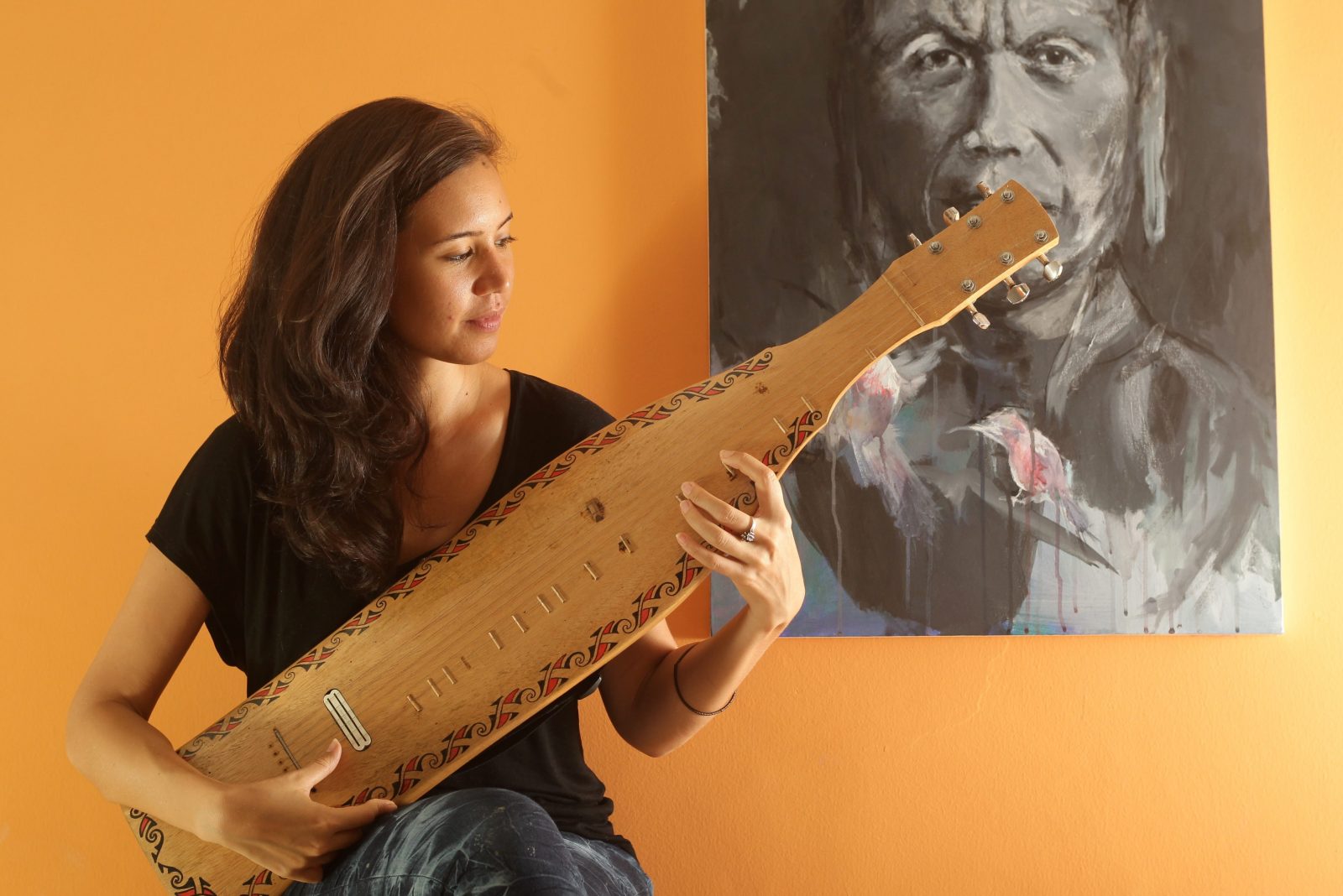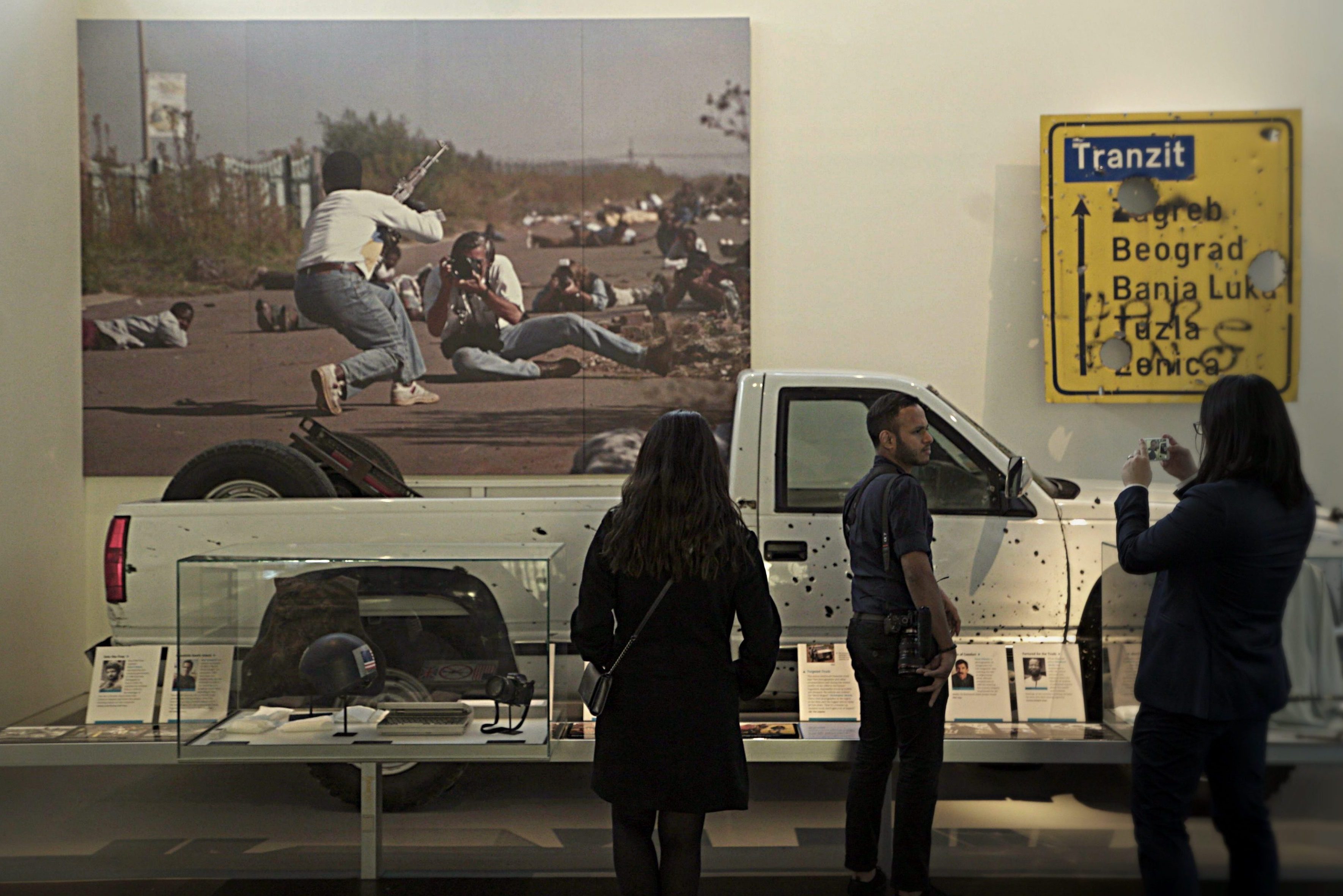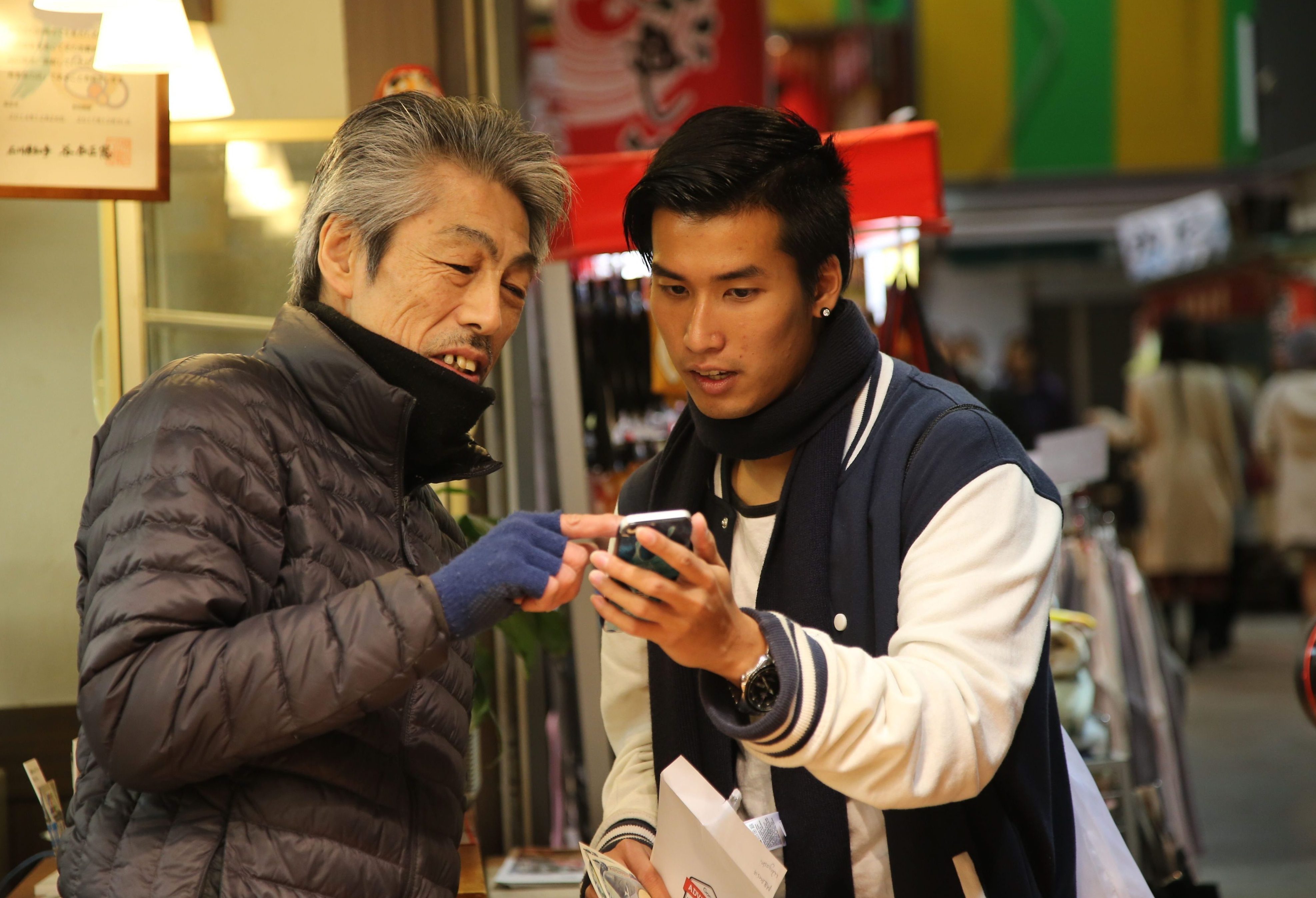ARTIST and musician Alena Murang is on a mission: to save the arts and culture of her people.
The Kelabit-Italian Murang is one of the very few left who play the sape, the traditional lute of the Orang Ulu of Sarawak.
But it’s been a struggle to get new blood onto the scene.
“Traditional instruments aren’t ‘sexy’ in the way pop and rock is sexy,” she said.
“It’s a shame, because the traditional songs and ways of playing were inspired by nature, and I believe those songs resonate with the body, mind and soul in a way many of us have forgotten.”
Even the elders in her longhouse have started losing touch with their music, she said, and potential students are finding it increasingly difficult to find teachers.
That’s why she’s trying to ensure traditional music doesn’t die out, by making traditional instruments “sexier” to young Malaysians.
She has identified two ways to do it: first by proving they’re a hit with international audiences, and second, by making them cool through the kind of music she plays.
Her debut EP, Flight, featuring traditional Kelabit and Kenyah songs, was launched in August, and she has gone on international tours as far away as France and the Netherlands.

Murang recently released an album featuring traditional Kenyah and Kelabit songs, and performs at international music festivals all in a bid to make traditional music instruments ‘sexier’. — Photos: AZMAN GHANI/The Star
Locally, she’s poised to perform on an international stage together with acts from the United Kingdom, Belgium and China, to name a few, at the 2017 Rainforest World Music Festival in Sarawak.
It seems like a musician’s dream come true, but it has been a long battle to get to where she is. First, she had to fight to be allowed to learn the sape because traditionally, it was frowned upon for women to play the instrument.
“In my area, only the shamans, who were men, were allowed to play the sape,” she said. Luckily, well-known sape player Matthew Ngau agreed to teach her, despite a few misgivings of his own.
“He struggled internally trying to decide whether or not to teach girls,” said Murang.
But that wasn’t all. The older generation also disapproved of the traditional Kelabit songs she learnt as part of her sape lessons.
Those songs, with their themes of adultery and animal slaughter, went against the Christian beliefs the community had converted to in the 70s.
Murang, however, believes religion and culture should be kept separate, especially when the latter is in danger of dying out.
“Culture is one thing, religion is another. We may not believe in that way of life anymore, but we have songs and artwork, and we’re losing those art forms in just one generation,” she argued.
“Even in my longhouse, there are very few Kelabit singers left. My own aunties barely know the songs.”
Drumming up interest
Murang isn’t alone in trying to keep traditional Malaysian music alive.
Percussionist Muhammad Abdul Karim Ahmad Zafiruddin wants to make sure the art of playing traditional Malay drums, or gendang, is not forgotten among his peers.
According to him, here are over 1,000 types of gendang, among them a tambourine called rebana, a drum called
gendang gamelan, and the familiar hand-held drum, kompang. Abdul Karim’s dream is to one day play them all – but first, he needs to ensure they don’t go extinct.
In order to do that, he goes on tours to raise the visibility of traditional instruments.
It was during one of these tours, held in the United States, that his attempt to share traditional Malaysian music took a dramatic turn.
Arts Midwest, a US-based organisation that aims to expose the American midwest to arts and culture from around the world, came to Malaysia looking for a band to participate in their cultural exchange programme. Abdul Karim and his band, Diplomats of Drum (which, incidentally, also boasts Murang as one of its members), managed to get picked.
Everything was fine and dandy – they performed in states like Houston, Chicago and New Orleans – until they reached Crockett, Texas.
“It looked like a scene from CSI, you know, the kind of place they dump bodies at,” he said.

Unfazed by the death threats he received in the United States, Abdul Karim still wants to share traditional Malay music with young people, both locally and internationallly.
Aside from that, it also turned out to be housing some anti-Muslim residents who were vehemently opposed to Arts Midwest bringing in bands from “Muslim countries” – ours included.
“Our liaison got a note saying ‘Don’t bring those Arabs here, we’ll shoot them,’” he said.
“It was like something out of a movie!”
The story has a happy ending – the show “blew their minds”, said Abdul Karim.
“Our liaison was a local man, the first there to have a daughter married to a Muslim, so he knew exactly who sent the note,” he said. “He was able to identify them at the show, and apparently they stayed the whole two hours and enjoyed themselves!”
Abdul Karim may have enjoyed some serious international triumphs, but his main priority is still to ensure the local youth learn to appreciate – and hopefully pick up – the gendang.
The problem is, he said, while pockets of the community, especially in the rural areas – do show significant interest, cityfolk are deaf to its charms.
“I know many people interested in drums, but they’ve been too distracted by the Internet to pick it up. With the houses packed so closely together, can you imagine the neighbours’ complaints about the noise?” he said.
That could be why the gendang is more popular in the kampungs, he said – a great deal more space between houses and a more old-school way of living.
But space issues and city life are just two of the many challenges faced by those who promoting traditional music.
Orchestrating change
The struggle to outrun the tide of change is something Moh Hoy Yi, 23, is all too familiar with.
The broadcasting student, who plays the er-hu (a two-stringed Chinese violin), said most people just don’t understand why she plays something that’s “only for the old and ancient”.
However, the orchestra she plays in – the Tunku Abdul Rahman University (UTAR) Chinese Orchestra in Sungai Long – has taken steps to get more young people interested in traditional Chinese instruments, and one such step was to start playing contemporary songs by artists like Coldplay and One Republic.
“It really surprised our audience, who were expecting stereotypical Chinese classical music!” she said. “If we can continue along this path, more young people might be interested enough in traditional music instruments to start experimenting with them.”

Moh uses social media to get in touch with Chinese traditional musicians scattered throughout the country.
Moh is one example of how young traditional musicians are using modern tools and avenues available to them – even when promoting ancient culture.
On top of rearranging popular music to suit old-timey instruments – particularly difficult because the rhythm of classical songs are often different from contemporary music – Moh and her orchestra use social media to get information as well as hone their art.
“We use Facebook to learn about events and competitions happening across the country,” she said. “It’s also useful for reaching out to other orchestras. There aren’t a lot of coaches around, so the best way to learn new things is through collaborations.”
So far, her orchestra has collaborated with orchestras from Multimedia University and Universiti Kebangsaan Malaysia, and has held inter-campus competitions and collaborations with the UTAR campus in Kampar.
Facebook has also proved invaluable for her personally – she uses the platform to buy cleaning equipment and parts for her er-hu.
“The Chinese traditional musician community is a small one, and we’re quite scattered,” she said. “Social media makes it so much easier for us to find each other and share information. It’s not just about one particular instrument – it helps all of us.”
Fusing a new genre
The problem with a lot of traditional music is that most people just don’t understand it, said Keeran Raj Rajendran, who plays the sitar.
“Only those who are familiar with the classical stories behind the songs will understand the tale a sitar player is telling through his music,” he said.
Those people are few and far between, he said. So, like Moh, he’s trying to reach out to a larger audience by giving his music some contemporary flair.
“Traditional Indian music, especially the ones written for the sitar, can go on for 45 minutes per piece,” he said.
“Only those who love it would understand the story, and sit through the whole song. Everybody else would be like, ‘huh?’ and stop listening,” he said with a laugh.
That’s why he tries to create new compositions, fusing traditional Indian musical instruments with modern scores that last about ten minutes, the average listener’s attention span, he said.

Keeran is the only young sitar player he knows, but he hopes this will change when more parents allow their children to take up traditional music instruments. — Handout
Keeran was classically trained at the Temple of Fine Arts, Brickfields, and counts himself as the only young sitar player he knows.
But it’s not just the youth’s lack of interest that stops them from picking up classical instruments, he said. Parents play a role as well.
“There are over 100 students learning the sitar at the Temple of Fine Arts right now,” he said. “But realistically speaking, none of them will take it to the next level.”
That’s because there just isn’t any support for young people in traditional arts in Malaysia, he said.
“It’s hard enough to make a living as a musician,” said Keeran, who works as an aircraft engineer by day, and gives sitar lessons in his spare time. “But it’s even harder as a traditional musician – and parents here would rather their children give up music lessons and focus on their studies.”
It took him 15 years to get to where he is, and that’s about 14 years too many for parents who would, understandably, rather see their kids grow up to be engineers than musicians.
But Keeran is living proof that it’s possible to do both.
“You just need to have passion,” he said. “My parents forced me to quit my lessons when I was in secondary school, but I practised on my own every night. And I wound up becoming even better!”
It’s his fervent hope that there will be a new crop of Malaysian sitar players in the future. But for now, he’s trying to raise the instrument’s visibility through art and cultural shows.
He and his band Pranathi were the musicians behind the BOH Cameronian Award-winning musical Sand: The Musical.
His bandmate Santosh Logandran won the award for best musical direction in a musical production last year, a huge triumph for traditional Indian music.
It’s landmark occasions like these that Keeran hopes will draw more young people – and their parents – to classical instruments.
“They don’t even have to be Indian!” he said with a laugh.
“I have Chinese and Malay friends who are learning to play the sitar – the beauty of musical instruments is that they don’t look at race. Just passion. With enough passion, the art of traditional music will never die out.”





Tell us what you think!